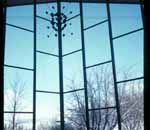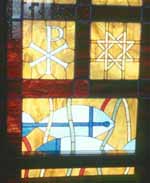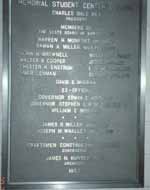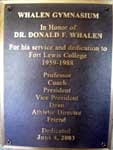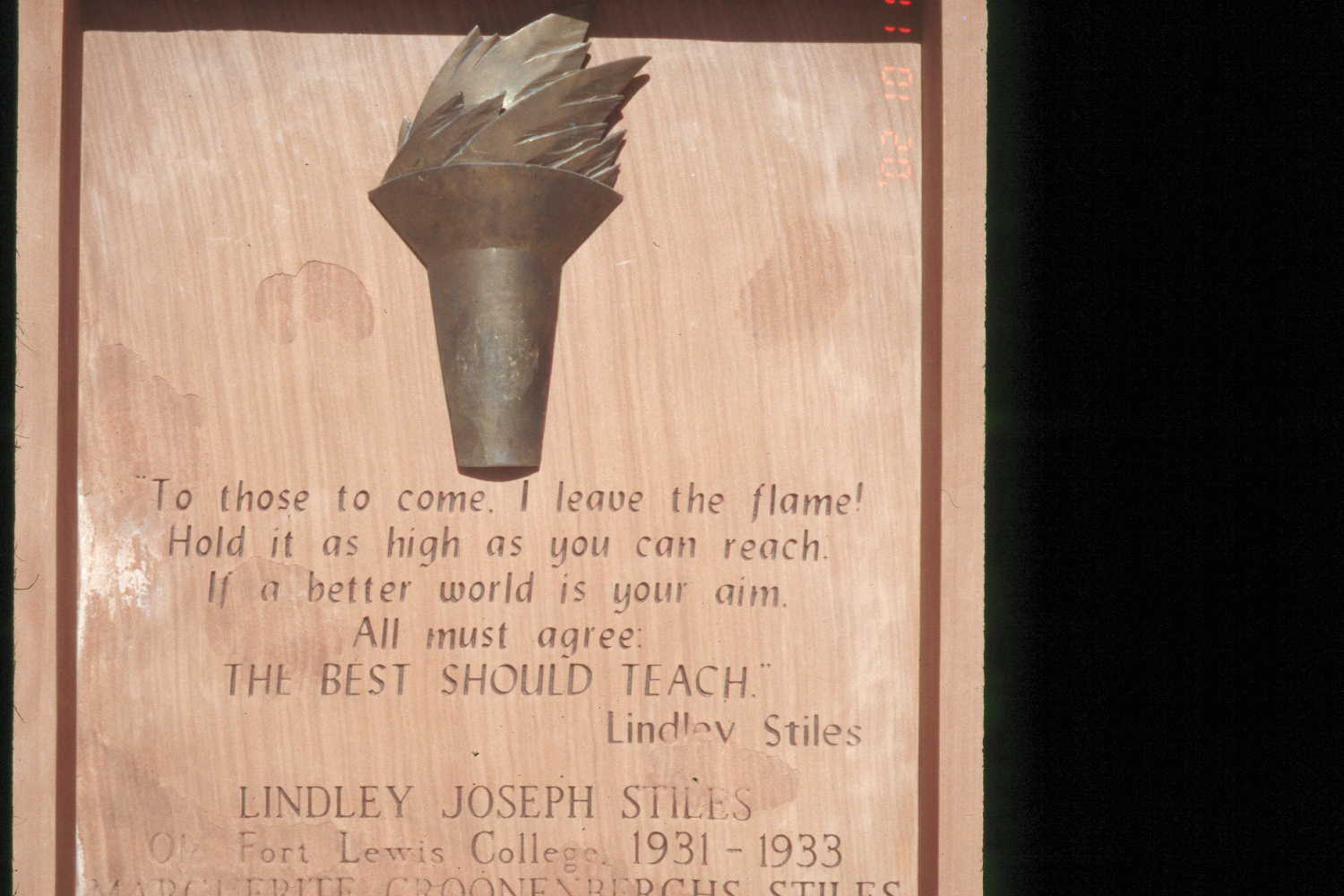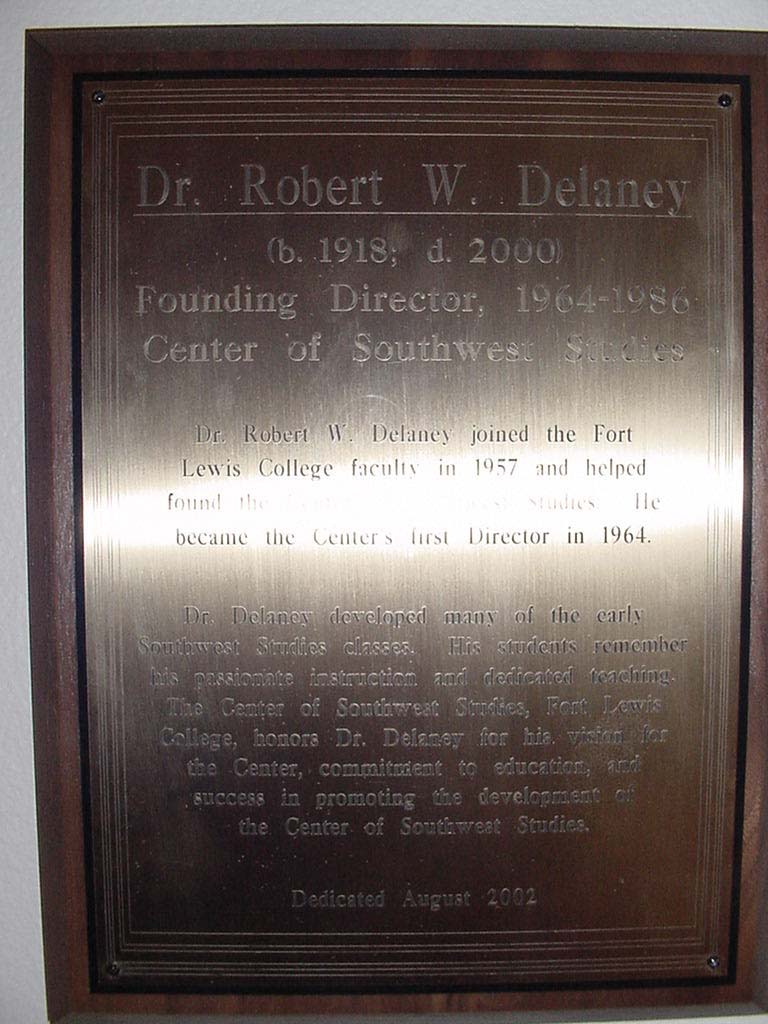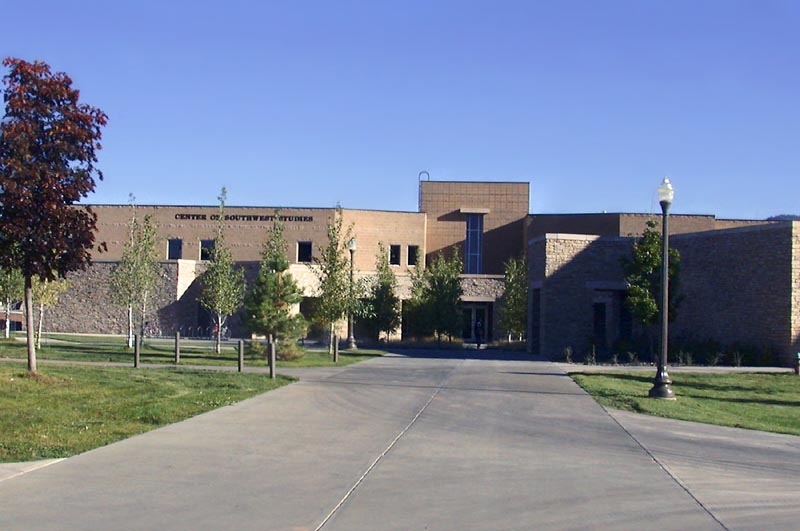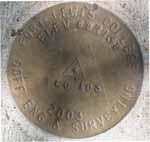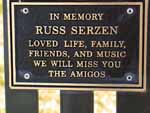Historical
Markers: |
|
| Fort Lewis College moved to Durango in the summer of 1956 from the former military fort that was located
near Hesperus, Colorado, some fourteen miles southwest
of Durango (click here for a picture).
In
2002-03, a public history class under the direction of the College
Archivist undertook a project to document every historical marker on the
Fort Lewis College campus in Durango and to educate visitors and the
community about the history of this campus. |
|
| The former sign, pictured above when this walking tour was first developed in the winter of 2003, was replaced by 2004 by the one below that brightly displays the official school colors. | |
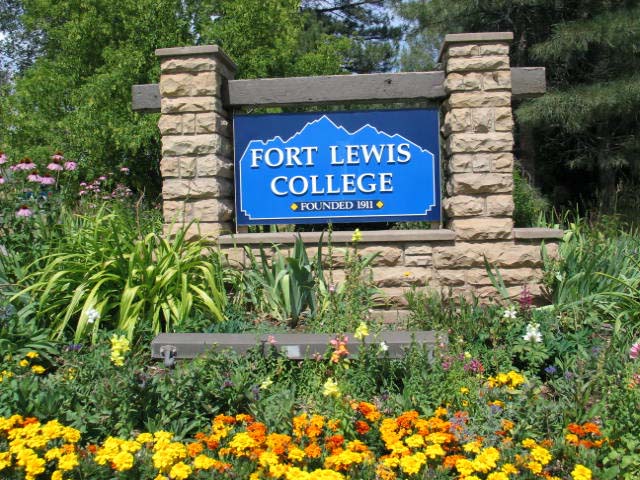 |
|
| Your route around campus will proceed clockwise, starting with the lower level of the College Union Building. Allow seventy minutes for the full walk; just under an hour if you omit the long loop around the football field. To get your bearings, click here for a 1994 aerial photo showing the campus. | |
| Title | Image (click on image for a larger view) | Location / Historical Notes | |
| Postal Service |  |
The
first point on the campus tour is the post office (depicted here by the
pictures from the U.S. Postal Service first-day commemorative envelope)
-- located on the northeast corner of the College Union Building ("CUB").
The establishment of the Fort Lewis A &M College Post Office Contract Station was approved by the State Board of Agriculture on Dec. 13, 1961; its contract was approved in June of 1962. It is a full-service post office, staffed by Fort Lewis College employees. |
|
 |
|||
| Student Union | 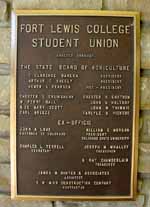 |
This plaque is located in the lower level east entry vestibule of the College Union Building ("CUB"). The building was constructed in 1966-1967.
|
|
| Buddy walk: Rexer “Buzzy” Berndt | 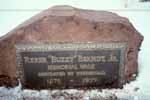 |
On a rock on an unpaved walking path east of
(and facing the rear of) the Academic
Advancement building. This memorial, photographed in the winter of
2002-03, is no longer on the campus; it was returned to the Berndt
family between that time and 2005. |
|
| Old Fort Family Endowment | 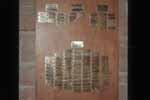 |
|
|
| Berndt Hall (“Academic Building”) | 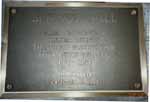 |
The
Berndt Hall plaque is located on your right This gray Fort Lewis A&M College plaque is |
|
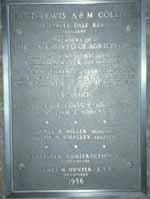 |
|||
| Rexer Berndt portrait painting | 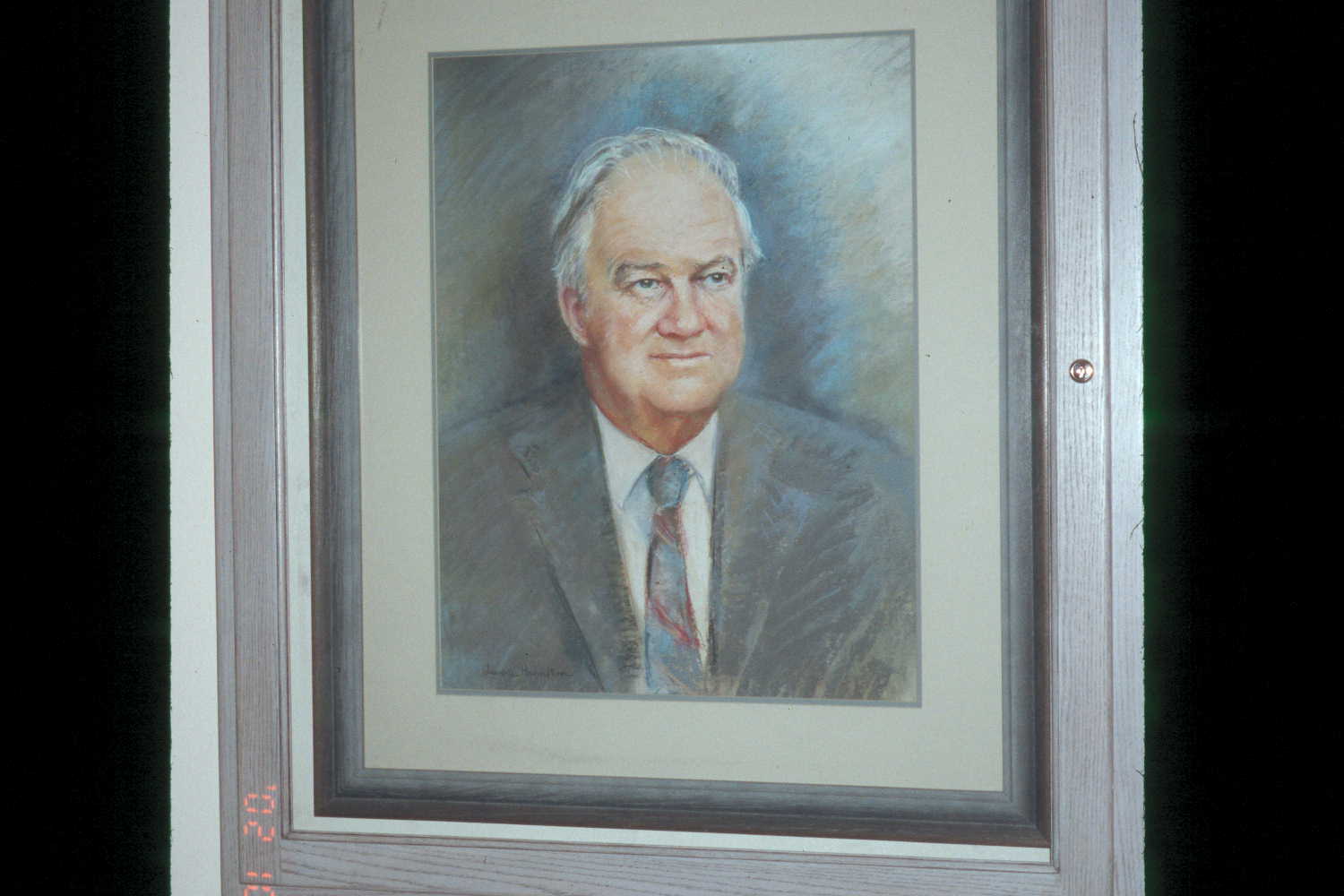 |
This
painting is located in the central foyer of |
|
| Fort Lewis College presidents photo portraits | 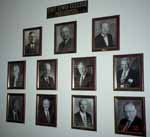 |
These
black and white
photograph portraits, Exit Berndt Hall to the west and turn to the left as you exit Berndt Hall and walk toward the Chemistry Building to see the next two items. Walk straight through that building or walk around it to the southwest. |
|
| Valarie M. Poore memorial bench | 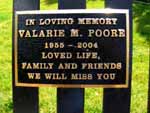 |
This plaque, on a bench in the plaza (newly constructed and beautifully landscaped circa 2004) in the courtyard between the Chemistry building and the Biology wing at the north end of Berndt Hall, was placed in memory of Valarie M. Poore, a former custodian on campus. Walk through the Biology wing of Berndt Hall, or walk around that wing counter-clockwise. | |
Preston Somers garden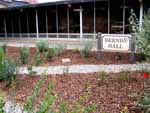 |
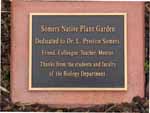 |
The Biology Department planted this garden in 2003 and dedicated it in honor of Professor Preston Somers in 2004 when he retired. This bronze marker is to the left when you are facing the door that enters the southwest wing of the long Berndt Hall building -- the door that is closest to the McPherson Chapel. Now, walk across the asphalt driveway, keeping the tan brown metal storage units on your left, and walk across the lawn to the young but hearty Ponderosa Pine tree that has McPherson Chapel in the background. | |
John Dever memorial
pine tree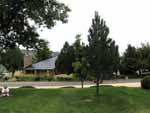 |
 |
The Biology Department and the Biology Club planted this ponderosa pine in 1998/99 in memory of the late Biology Professor John Dever who died in February of 1998. This bronze marker is on the lawn across from McPherson Chapel. Now, walk across Rim Drive to see the beautiful chapel and its lovely landscaping. |
|
| T. Chase McPherson Memorial Chapel | The college chapel was built (1958-1959) entirely with contributions and
was dedicated on September 9, 1960. The architect was James M. Hunter & Associates (Boulder, Colo.).
Mr. T. Chase McPherson (1889-1954) was born in Holly, Colorado, the son of a prominent merchant. An irrigation engineer, he was involved with various engineering projects in the San Luis Valley, and was president of the State Board of Agriculture at the time of his death. This is not the original door. The original door Leaving the chapel, notice the beautiful apple orchard on your left (ornamental apples, not the eating variety). If you want a bit of a hike to see the Scott Whiteside marker, walk through the orchard and take about 240 strides to the north along the Rim Trail that descends from the road at about that point. Otherwise, cross back over Rim Drive and walk down the asphalt driveway to enter the rear door of the Miller Student Center (past the Health Center). |
||
David Robert Zummo marker |
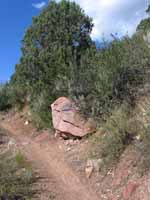 |
The David Zummo marker is a bronze plaque attached to a boulder north of the Chapel along the Rim Trail. This marker is located on City of Durango property, but its placement was arranged between the family and the Fort Lewis College Foundation. To continue the walking tour, retrace your steps to the Chapel and cross back over Rim Drive and walk to Miller Student Center. |
|
| Miller Student Center | This plaque is located on the left inside the north Click on the thumbnail to see a larger image of this and of two other Student Center plaques that are not actually placed on the building. |
||
| Howdy Walk | 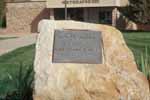 |
Leaving
Miller, walk across toward the Theatre building.
This
plaque, on a stone between Miller Student |
|
| Flagpole marker | [no
longer in existence; no image is available] |
Formerly on a stone near the former flagpole at the north entrance to the Miller Student Center. It was placed by the G.I. Club in 1961-62. | |
Scott Whiteside marker  |
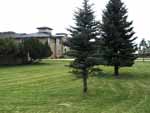 |
Looking to your right as you walk toward the Theatre Building with the Education Business Building in the distance, you will see three Ponderosa Pine trees. This side of the smallest of the three is a marble memorial stone in the lawn to recognize the life of Scott Whiteside, a Fort Lewis College student who died in 1992. | |
| Theatre | 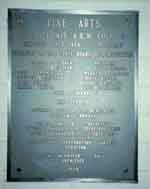 |
This plaque is located to the right, inside the |
|
| Alfred McNeil Camp Residence Hall |  |
This plaque is mounted in
the outside wall, to the left of the southwest entrance
of the Camp-Snyder Residence
Hall Complex. Camp Hall was dedicated
on September 11, 1959 in honor of A. M. Camp (b. 1884); it was the first
building on campus to be named for an individual.
Continue walking north, toward the Student Life Center (winner of awards for its sustainable design). |
|
| Student Life Center | 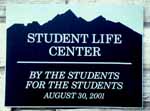 |
This new style of
plaque is located on the outside wall, to the left of the
east entrance to the building that was funded by Fort
Lewis College students' fees and was dedicated
in 2001.
Continue walking north, between the Student Life Center on your left, the renovated (2003) gymnasium building (where graduation ceremonies are held two or three times a year) on your right, and then the football field on your right. Or, to save at least ten minutes, skip the next two markers and walk instead toward the Library. |
|
| Whalen Gymnasium | The College gymnasium, (planning for it began in 1965; the building was finally finished in the summer of 1971), was named in honor of Donald Whalen in 2003, following a partial renovation of the building. Dr. Whalen coached the men’s basketball team from 1959-70 and added duties as head golf coach and Director of Athletics from 1962-70. His 1969 golf team was the first Fort Lewis College team in any sport to win a league championship after the college became a four-year institution in 1962. The team was inducted into the Athletic Hall of Fame in 2000, making Dr. Whalen one of two individuals to be inducted as head coach and as part of the team. This plaque is inside, in the foyer. | ||
| Athletic stadium plaque in memory of Ted Foster III |  |
This plaque on the west wall of the Press Box building on the west side of the field was placed in memory of Ted “Fog” Foster, who was killed in an automobile accident two years before the field's dedication in November of 1979. All of its construction funds were donated; the bulk was from his parents, Charlott and Ted Foster. | |
| Ray Dennison Memorial Field (athletic stadium) | 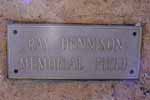 |
This plaque is on a rock outside the far/north end of the stadium that was dedicated on October 29, 1960 (at a game with Eastern Arizona Junior College) to the memory of Ray Dennison (1929-1955) who was an agriculture major at Fort Lewis College. Mr. Dennison died as a result of an injury in a varsity football game in Trinidad, Colorado. The bowl for the field was cut from a natural depression in 1955-56 by the Burnett Construction Company. Construction began in the summer of 1958; the first football games were played on the field in the fall of 1959. | |
| Lyle Howard Park | 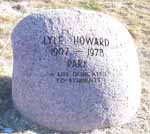 |
Walk
down Raider Drive toward Reed Library.
This grassy park was originally a strip of grass outside the Sociology Department offices on the south side of Reed Library, across from the CUB’s cafeteria. At that time it was marked by a large carved wooden “Lyle Howard Park” sign. Dr. Howard (1907-1978) taught foreign languages at Fort Lewis College from 1957 through 1970. This new stone marker recalls “A life dedicated to students.” |
|
| Bounding
Mule Deer/ sculpture by Dan Ostermiller |
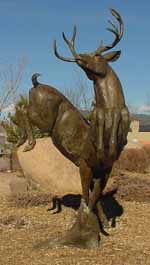 |
Look
for this sculpture in the landscaped island behind you. It is not
a historical marker, but you may be wondering about it.
This sculpture was donated by Ray and Sally Duncan. It is part of a program that is being supported by members of the Ballantine family and others to place sculptures around campus. You will have already seen The Rainmaker by Fritz White (donated by William G. Ballantine) in front of Miller Student Center. If you are walking around campus in the early morning or late evening hours or when the campus is quiet, you may see any number of real animals -- deer, fox, raccoon... Walk toward the clock tower to see a historical overview of Fort Lewis. |
|
| Dale
Rea Memorial Clock Tower / Old Fort Plaza 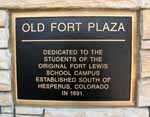 |
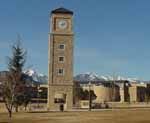 |
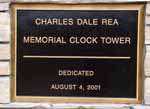 The clock tower was designed by Allison Colwell, a Fort Lewis College
Physical Plant planner, and was constructed 1999-2001 as a tribute to
Dale Rea, first president of the college (1949-1962). Dr. Rea The clock tower was designed by Allison Colwell, a Fort Lewis College
Physical Plant planner, and was constructed 1999-2001 as a tribute to
Dale Rea, first president of the college (1949-1962). Dr. Rea himself funded much of the cost of the tower. |
|
| Fort Lewis College historical plaque at the Dale Rea Clock Tower | 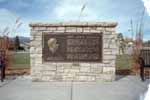 |
This plaque, between two benches to the west of the Clock Tower, summarizes the history of Fort Lewis College through the presidency (1949-1962) of Charles Dale Rea, whose profile is shown in relief on this bronze marker. It was dedicated on August 14, 1964, at its original location inset in a stone wall at the east end of the “island” south of Berndt Hall. | |
| Clock tower (northwest pillar): Fort Lewis as a military post, 1878-1891 | 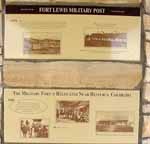 |
Fort Lewis was originally staffed as a
military post in Pagosa Springs in 1878, to control and protect the Southern Ute Indians and the settlers who were moving into the area. Relocated in 1880 near Hesperus, Fort Lewis was ordered closed by the Federal government in 1891 and was turned over to the Department of Interior for use as an Indian School. For further information see the history of Fort Lewis at: http://oldfort.fortlewis.edu/index.htm. |
|
| Clock tower (northeast pillar): Fort Lewis as an Indian school, 1892-1910 | 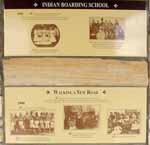 |
The Fort Lewis Indian School was opened in 1892 with 51 children enrolled.
Tribes represented included Navajo, Ute, Apache and Sioux. By 1901 the school had 345 students, but because reservation schools were
being encouraged, the number of students at Fort Lewis dropped to 40 in 1909. (See the Colorado State Archives' online list of names from this and another Indian Industrial Schools in the 1900 Federal Census at http://www.archives.state.co.us/Indians/Indians.htm#lewis.) 1910 was the final year of the Fort Lewis Indian School. That year, Congress offered the property to Colorado with two conditions: that it would be an institution of learning, and that the Indian pupils would not be charged tuition. |
|
| Clock tower (southeast pillar): Fort Lewis as a high school and junior college, 1911-1938 | 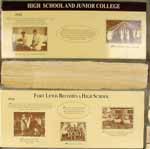 |
|
|
| Clock tower (southwest pillar): Fort Lewis as a college, 1950s - | 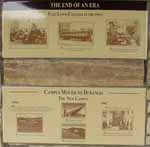 |
In 1925 a petition with over 1,000 signatures requested the Colorado General
Assembly to establish Fort Lewis as a college. A two-year college curriculum was inaugurated in 1927. In 1933
Fort Lewis began offering only college-level courses; high school classes
were discontinued. In 1948 Fort Lewis was officially designated
a junior college with its own president; it was autonomous from the
college at Fort Collins but they were both under control of the State
Board of Agriculture. In 1962 Fort Lewis College became a baccalaureate degree-granting institution. |
|
| Jim Hays Memorial | 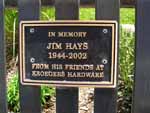 |
This plaque, on another bench by the clock tower, was placed in memory of Jimmy Hays, beloved employee of Fort Lewis College (in Physical Plant Services) from 1986-1998. |
|
| Lovers' Memorial | 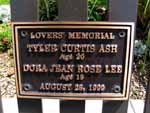 |
This
plaque, on a bench by the
clock tower, was placed in memory of Tyler
Curtis Ash, age 20 (son of History Department professor Jim Ash), and Dora Jean Rose Lee, age
19, who died on August 28, 1999 in a traffic accident.
Continue walking toward Reed Library -- toward the campus' flagpole. |
|
| The River Potters / sculpture by Doug Hyde | 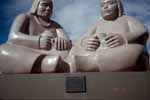 |
|
|
| John F. Reed Library |  |
The John F. Reed plaque is on the exterior wall of the Library, just to the left as you are entering the southwest upper level front door (i.e., the door closest to the clock tower). The library/ classroom building, dedicated on April 16, 1967, was renamed in honor of President John F. Reed, second president of the college (1962-1969), on October 4, 1986. | |
| Fort Lewis centennial poem by Milford E. Shields, Poet Laureate of the State of Colorado |
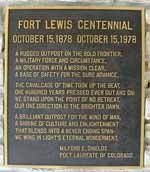 |
Entering
the Reed Library building on the upper level in the southwest
door, you will see this poem on your left in the vestibule.
Milford Shields was the Poet Laureate of Colorado; some of his works are
in the College Archives at the Center of Southwest Studies.
He wrote: "A rugged outpost on the bold
frontier, / A military force and circumstance, / An operation with a
mission clear, / A base of safety for the sure advance./ The
cavalcade of time took up the beat, / One hundred years pressed ever out
and on: / We stand upon the point of no retreat, / Our one direction is
the brighter dawn. / A brilliant outpost for the mind of man, / A shrine
of culture and enlightenment / That blends into a never ending span - /
We wing in light's eternal wonderment." Continue in toward the Library; head for the elevator. |
|
| Alice Admire Award | 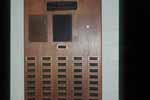 |
Located
to the right of the elevator in the main hallway of the main floor of
Reed Library, this award lists winners of the Outstanding Teaching Award
which was first given in 1974. In 1978 the award was renamed the
Alice Admire Outstanding Teaching Award, for the late Alice Admire,
an Assistant Professor of English at Fort Lewis College at the time of
her retirement in 1974. Board the elevator and push the button for the third floor -- open during school hours as a study hall. |
|
| Southwest tile wall map mural | 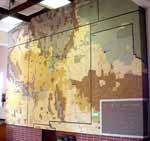 |
The
top floor of Reed Library, where this large tile map of the Southwest
is still located, housed the Center of Southwest Studies from 1967 until the opening of the
new Center in its own building in 2001.
The Center of Southwest Studies was founded in June of 1964 with a financial gift from the Ballantine family and the approval of the State Board of Agriculture on June 19, 1964. |
|
| Arthur Ballantine Research Room | 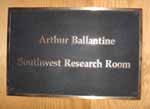 |
On April 25, 1969 the Ballantine Trust was established, and on February 29, 1980 the Board approved placing this plaque in memory of Arthur Ballantine, Jr. The Center of Southwest Studies' own building was eventually opened for full service in August of 2001 after grand opening celebrations that began in January of 2001. Now, walk or ride the elevator back down to the 1st floor. | |
| Fort Lewis College Library | 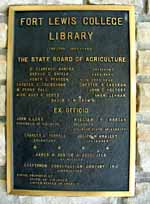 |
Walk
through the "fishbowl," which is what the student study room/ 24-hour computer lab is called, and go to the vestibule exiting the southeast upper door of the Library. This original plaque lists the members of the State Board of Agriculture as of 1966. Construction of the new library in 1965-67 (it was formerly part of Berndt Hall) marked an academic and physical shift for the college. The Library was designed to be the center of academic campus life and (until the clock tower) the physical focal point of the campus. The stone was quarried just three miles from the campus. Walk straight out and down the steps to the flagpole level. |
|
| C. Lindley Stiles | 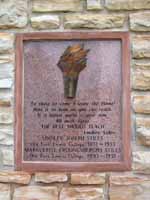 |
This stone marker is set in the southeast corner of the Library, on the plaza level. It was given in support of the teaching mission of Fort Lewis College, in particular its role in training teachers. The stone was vandalized in the early 2000s (as shown on the far left) and was replaced with a fresh version in the summer of 2005 (on the near left). Walk a few steps toward the Academic Advancement building to the most obscure marker on campus. |
|
| Dave Madson plaque |  |
This metal plaque, attached to a rock that has a 1.5” diameter bore hole in its upper right corner, is situated between a blue spruce (to the right) and a small apple tree (directly behind). Its text reads as follows: "The Non-Traditional Club of Fort Lewis College donates this tree in memory of our advisor, Dave Madson. Each moment is a beginning/ The sun rises even as it sets/ 1982-1983." | |
| Memorial Student Lounge | 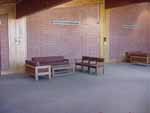 |
Walk between the CUB and the Library, heading north towards Noble Hall. Enter the north upper level of the CUB. Plaques around three of the Lounge walls are placed in remembrance of various students who died since the time this end of the CUB was built. This room is the major portion of the upper level of a 1986 addition to the College Union Building. | |
| Dan Noble Hall | 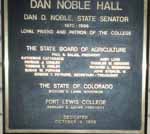 |
Walk across the hill and enter Noble Hall. This plaque, located in the lower level southeast entrance vestibule of Noble Hall, was dedicated on October 4, 1986 in honor of the late Dan D. Noble (d. 2002) of Norwood, Colo., a Colorado State Senator from 1970-1986 representing the Western Slope. At that time, this was the newest academic facility since Hesperus Hall (dedicated on November 11, 1976 and demolished in the summer of 2002). Senator Noble was instrumental in achieving the state appropriations for both buildings. Next, walk through Noble Hall, exiting upstairs at the north doors. | |
| Jones Hall | 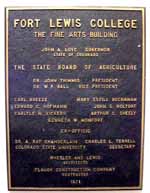 |
Enter Jones Hall (until 2007 it was Sage Hall, and prior to 1997 it was
the Fine Arts Building) and veer right to walk down
the hallway and down a ramp toward the recital hall. The plaque is on your right (near the top of the long stairs from the parking
lot).
This building, constructed in 1970-1971, was the second of what so far are three Fine Arts buildings (the Theatre having served that function previously). It was renamed in honor of former Fort Lewis College President Joel M. Jones in 2007. Look across the hall toward the Roshong Recital Hall to see the plaque that is located in the main hallway of Sage Hall, to the right of the south door into the Hall’s vestibule. |
|
| Roshong Recital Hall | 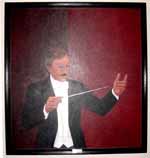 |
Originally named the Fine Arts Recital Hall, this intimate recital hall was renamed the Jan Carl Roshong Recital Hall during dedication ceremonies on September 10, 1995, in honor of the late chair of the Music Department. This painting of Dr. Roshong (who died in 1994) is on the wall in the vestibule. Now, continue walking through Sage Hall, past the music instructors' offices, and cross from this building to the Concert Hall, using the main door, which is off of the covered circular portico of the Cultural Arts Complex of the Southwest. | |
| Community Concert Hall donor recognition wall | 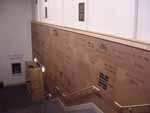 |
Recognitions of donors are on the wall along the main stairway to the
Hall.
Exit the Concert Hall and walk across into the main entrance of the Center of Southwest Studies. |
|
| Center of Southwest Studies donor recognition tiles | 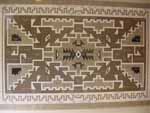 |
|
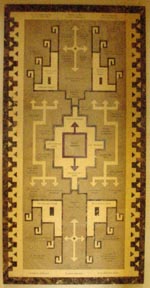 |
| Located in the main hallway just to the right and the left inside the front of the Center, these are replicas of actual Navajo textiles. Names are still being added to both "rugs" to recognize those who give the Center cash or in-kind gifts of $1,000 or more. | |||
| Robert W. Delaney Southwest Research Library | 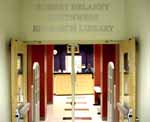 |
Dr. Robert W. Delaney (1918-2000) was the founding director
of the Center of Southwest Studies (1964-1986). He joined the Fort Lewis College faculty in 1957 and
helped found the Center of Southwest Studies. Dr. Delaney became the
Center’s first director in 1964, and
|
|
The plaque is located in the research library. Dr. Delaney's students remember his passionate instruction and dedicated teaching. Fort Lewis College honors Dr. Delaney for his vision for the Center, commitment to education, and success in promoting the development of the Center of Southwest Studies. Leaving the Center of Southwest Studies, turn left and head out toward the parking lots. |
|||
| Cultural Arts Complex of the Southwest | This is one of at least two markers on campus -- it notes that the elevation in the middle of the Cultural Arts plaza is 6,871.48 feet. Are you drinking plenty of water?! (Another marker is at the other end of the wide concrete pedestrian "runway" that leads to Reed Library.) | ||
This plaque, on a bench in the plaza of the Cultural Arts Complex of the Southwest, was placed in memory of Russ Serzen. |
|||
| Community Concert Hall cornerstone |  |
This cornerstone, located to your right when you are leaving the covered passageway leading from the entrances to the Concert Hall and the Southwest Center, was laid by M. W. Grand Lodge, A.E. & A.M. Colorado, in August 1997. |
|
| Center of Southwest Studies cornerstone |  |
This cornerstone is on a southeast corner of the Center, on your left as you leave the covered passageway that leads from the entrances to the Concert Hall and the Southwest Center. It was placed on Oct. 21, 2000. This and the Concert Hall cornerstone are the only (and last) Masonic cornerstones placed on campus. The Masonic organization has not been a contributor to the institution. | |
| The
Intruder: descending cougar / sculpture in bronze by Ken Bunn |
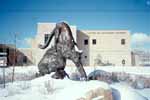 |
Situated on the landscaped traffic island at the entrance to the Cultural Arts Complex of the Southwest (i.e., the Concert Hall and the Center of Southwest Studies), this sculpture was presented to the college by the Ballantine family in honor of Morley Ballantine in a ceremony on November 9, 2001. It was cast at a foundry near Paonia, Colorado. "A gift to Fort Lewis College by the family and friends of Morley Cowles Ballantine. Dedicated November 9, 2001 in recognition of her many years of vision, support and leadership in building the Center of Southwest Studies." |
|
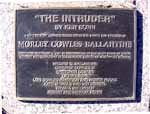 |
|||
| Nathan Hertzog memorial plaque |  |
This bronze plaque, below the lower level southeast entrance to Noble Hall to the left of the stairs as you are looking up that metal exterior staircase, was placed with a commemorative tree in memory of a deceased student. "In my heart I know you've won when the sun sets in the west." | |
| Centennial Apartments | 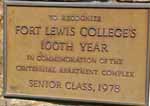 |
This plaque was placed by the Senior Class of 1978; that fall, the new Centennial Apartments complex (named in honor of Fort Lewis's 100th anniversary) was ready for occupancy. You will see this plaque if you are facing the small laundry room building that is in the center of the complex of concrete Centennial apartments (#1000 to your right, #3000 in the distance ahead of you). Turn right to see the picnic shelter. | |
| CCC picnic shelter | 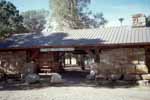 |
This picnic shelter (perhaps too far off the beaten path to include in the standard walking tour) is situated behind Bader A Residence Hall, on the southeast corner of campus. The shelter was built by the Civilian Conservation Corps in 1936. The CCC also built the front twisty road up to the college, which may be viewed online -- click here. |
|
| Do you know of a historical marker that is not mentioned here? Please notify the archivist. The first person who discovers each historical marker that we missed gets a free booklet, The coming of Durango's little train, by Robert W. Delaney, 1973. | |||
| This
project was managed by Todd Ellison, College Archivist, with assistance
at the early stages from members of his undergraduate courses in archives and public history
2002-03, and early help with html formatting by Robin Cole of the Office of Marketing and
Publications. A related list is of Fort
Lewis College plaques in the College Archives.
|
|||
Page last
modified: May 29, 2007 |
|||


